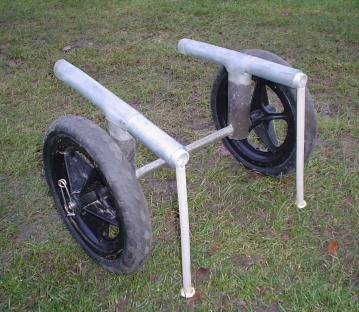JohnAbercrombie
Paddler
Thanks, Sandy. Your real-world experience and insights are really valuable.Why Trolleys Break
There are comments about breaking trolleys. I'm not surprised if people build weak trolleys as shown on the web.
I think your idea of the 'S' threading of the straps is very clever. Also, the legs storing inside the supports is less cumbersome than the flip-down style.
Some of your comments about the defects of commercial trolleys (aka carts) would be useful. It seems that a lot of the carts broken on the Bowren portages were commercial, not home-built.
https://www.trailheadpaddleshack.ca/wilderness-systems-heavy-duty-kayak-cart-with-no-f.html
https://www.mec.ca/en/product/6002-625/Kayak-Cart-Ultralight?
https://www.kayakacademy.com/products/suspenz-dlx-beach-cart?
https://www.kayakacademy.com/products/suspenz-heavy-duty-airless-cart-10-dia-airless-wheels?_
I had a C-Tug and it seemed difficult to assemble and disassemble, so I re-sold it. But I am not a 'cart guy'.
https://westerncanoekayak.com/c-tug-with-puncture-free-wheel/




